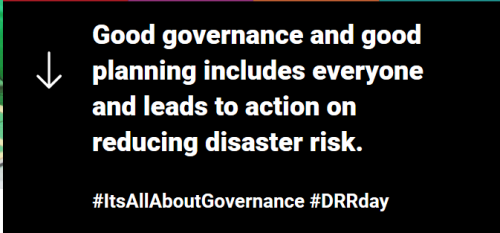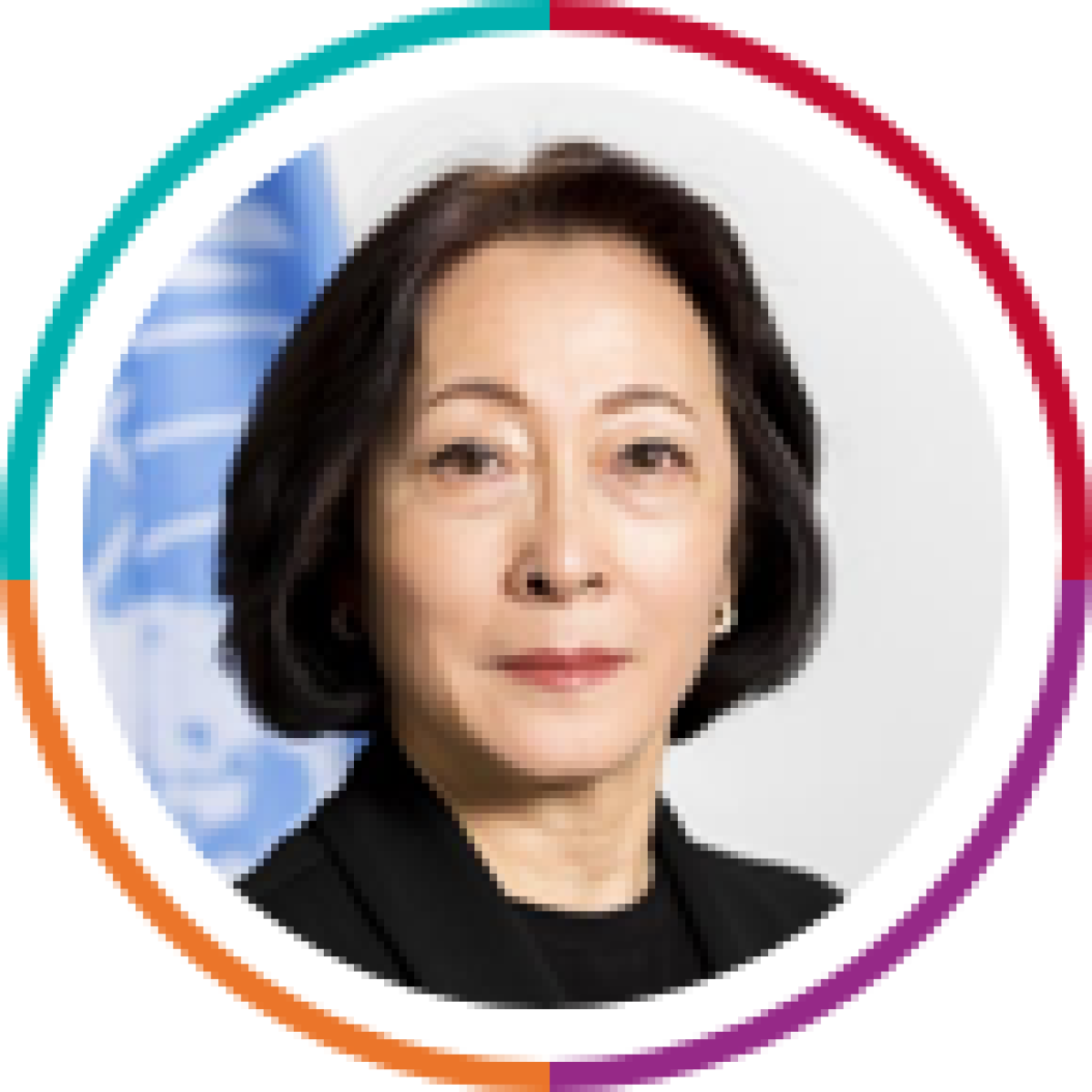
https://www.un.org/en/observances/disaster-reduction-day

Mami Mizutori, Special Representative of the Secretary-General for Disaster Risk Reduction and Head of UNDRR
Disaster risk governance
This requires having national and local strategies for disaster risk reduction in place by the end of the year as agreed by UN Member States when they adopted the Sendai Framework for Disaster Risk Reduction in 2015. We need to see strategies that address not just single hazards like floods and storms, but those that respond to systemic risk generated by zoonotic diseases, climate shocks and environmental breakdown.
Good national and local strategies for disaster risk reduction must be multi-sectoral, linking policies in areas such as land use, building codes, public health, education, agriculture, environmental protection, energy, water resources, poverty reduction and climate change adaptation.
It’s time to raise our game if we want to leave a more resilient planet to future generations.
Background
The International Day for Disaster Risk Reduction was started in 1989, after a call by the United Nations General Assembly for a day to promote a global culture of risk-awareness and disaster reduction. Held every 13 October, the day celebrates how people and communities around the world are reducing their exposure to disasters and raising awareness about the importance of reining in the risks that they face.
In 2015 at the Third UN World Conference on Disaster Risk Reduction in Sendai, Japan, the international community was reminded that disasters hit hardest at the local level with the potential to cause loss of life and great social and economic upheaval. Sudden onset disasters displace millions of people every year. Disasters, many of which are exacerbated by climate change, have a negative impact on investment in sustainable development and the desired outcomes.
It is also at the local level that capacities need to be strengthened urgently. The Sendai Framework for Disaster Risk Reduction is people-focussed and action-oriented in its approach to disaster risk reduction and applies to the risk of small-scale and large-scale disasters caused by man-made, or natural hazards, as well as related environmental, technological and biological hazards and risks.










Add new comment